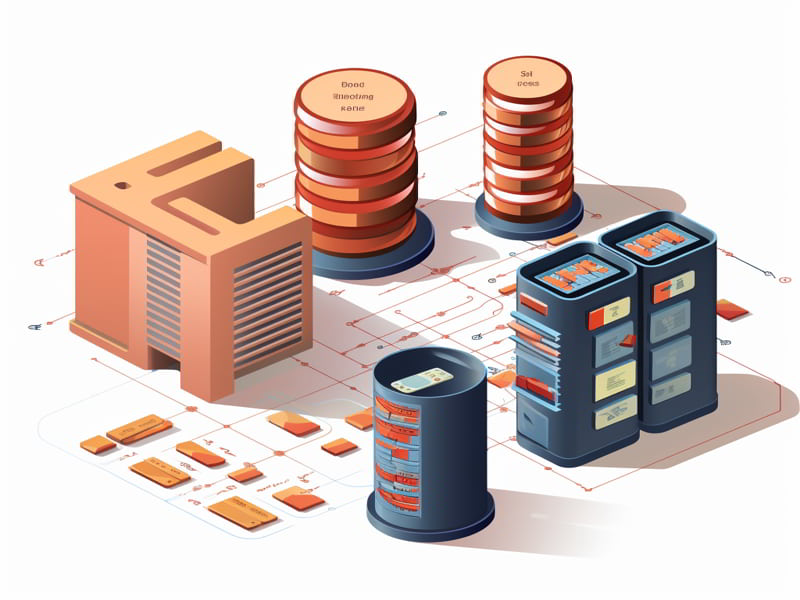Oracle ADF Interview Questions
As you prepare for an Oracle ADF interview, this blog will guide you through all the required technical concepts, best practices and examples.
Our blog can equip you with all the knowledge and skills required for success in an Oracle ADF interview, no matter your level of development expertise.
If you want to ace your Oracle Application Development Framework (ADF) interview, bookmark this post!
This blog contains many possible interview questions with thorough explanations and sample responses, these should assist those applying to ADF interviews in gaining more knowledge on technology topics that may appear on their examination test.
Are You Preparing to Interview on Oracle ADF Framework (ADF)?
Check Out This Blog Now If so! Professionals with skills in ADF are in high demand as it serves as an enterprise app creation framework.
Here at the Questions Blog, we offer information to assist with interview prep for ADF interviews, this may come in handy when trying out for one! ADF experts are often sought-after.
Anyone seeking to hone their abilities or prepare for an interview can benefit from this resource, which features comprehensive questions and answers about Oracle ADF.
If you want to use Oracle ADF or increase your abilities within this field, read this blog of interview questions for answers covering every facet.

1. What is the developer studio used for?
The developer studio is a tool used to develop Oracle ADF fusion applications.
2. At first, what are the development studio’s default position requests?
The developer studio asks for the default role customisation and database edition Java e-edition Java edition.
3. How can I determine what positions are open in the developer studio for creating apps?
Users can choose from various roles, such as core Java applications, Java enterprise applications, and database applications.
4. Is JDeveloper available for all technologies?
Yes, JDeveloper is also available to enable all technologies.
5. In the developer studio, are there any navigators available?
The developer studio has various navigators, including application navigator, database navigator, editor to write codes, component palette, resource palette, data control panel, structure window, property inspector, and log window.
6. For what purposes does the application navigator exist?
The application navigator provides information about the application and its projects.
7. On what two projects does an ADF application depend?
An ADF application consists of two projects: model project and view controller.
8. For an Oracle ADF application, what does the extension stand for?
The application extension of an ADF application is not JWS, but JBR stands for Java Workspace.
9. From what does the database navigator extract data?
The database navigator provides information about connections to the database.
10. How may one make use of the component palette?
The component palette allows users to create pages within the page by selecting components, such as text boxes and buttons. Users can customise their application’s functionality and layout by dragging and dropping elements onto the page.

Oracle ADF Training

Users can create rich web forms in the component palette by typing input text and selecting a button. There are around 150+ components available, and using these components, they can create rich web forms.
12. How can the label of a command button be changed?
To change the label of a command button, use the property inspector window.
13. In what ways is the structure window functional?
The structure window provides the structure of the page, including JSP root, view, document, form, and more.
14. How can I add or delete components in the structure window?
To add new components or remove existing ones, use the structure window. For example, to remove a command button from a page, select and delete the command button. To add another command button, use the component palette.
15. With the application server navigator, what benefits are you getting?
The application server navigator provides a list of connections established to application servers. By default, applications are deployed into the WebLogic server, but developers can also deploy them into servers like Tomcat or JBoss.
To establish connections to other servers, select the application server and right-click on the new application server.
16. Tell me about the Oracle ADF architecture.
The ADF framework is an end-to-end framework that allows developers to develop end-to-end applications using Java.
It adds value to the Java platform and is platform-dependent, with abstract classes like C.
These abstract classes hide implementation and provide functional things to the user, allowing developers to focus on the application rather than low-level architecture.
ADF is a drag-and-drop tool that will enable designers to design pages with most of the functionality.
17. In what areas does ADF get involved?
ADF focuses on business logic, allowing developers to implement logic in Java classes. However, there are steps to create methods and configure them for calls.
Metadata simplifies the task of writing user interfaces to services, allowing third-party services to understand the format.
18. What is the MVC pattern?
The MVC pattern is a model, view, and controller architecture. This pattern is used by most web application frameworks, such as the .NET Framework, as it simplifies the layer and separates logic from other categories.
The model layer represents enterprise data and business rules that manage access to data and updates.
ADF business component helps integrate with the model and database layers.
19. How does ADF’s view layer work?
The view layer is responsible for developing pages, task flows, and pages. The model layer contains ADF, BC, or ADF business components.
20. Can you name the five primary components of the ADF business component?
The ADF business component, or ADF-BC, consists of five main business objects: entity object, view object, application module, module four, view link, and associations.
21. Are you familiar with the ADF user interface layer?
The UI layer discusses the bounded and unbounded studies.
22. In ADF, what does the controller layer handle?
The controller layer is responsible for querying the database and managing task flows.
23. Does ADF data stand to benefit from graphical structures that can generate graphical views? If so, in what ways?
ADF and DVD components are graphical structures that can draw graphical views using data.
24. For ADF, what is the function of the ADF BC member?
The ADF BC component is used to create applications in ADF.
25. Regarding the business services, what are the other items listed?
Other products mentioned in the business services section include BAM, BPEL, SOA, and BI.
26. Just what does the ADF’s architectural design rest on?
The ADF architecture design is based on the MVC pattern.
27. Can you provide me with the layout of the ADF’s structural levels?
The ADF architecture design includes the area binding, model EDBC, controller, view, and metadata services layers.
28. What is the model layer in the ADF architecture design?
The model layer represents data values.
29. Why is the view layer important when planning an ADF architecture?
The view layer contains UI pages, ADF, BC, a wealthy client component, and Apache Trinidad config.
30. What are Trinidad components used for?
Trinidad components are used for skinning purposes.
31. If you want to include a CSS file in your training data, where do you need to have it?
If you want to include a CSS file in your training data, you need to have it in your training data.
32. Is mobility considered at all stages of ADF architectural planning?
The mobile component is a separate MAF product known as MAPS.

Oracle ADF Online Training

33. In the architectural plan for ADF, what is the business service level?
The business service layer handles data access between the model and the DB.
34. When it comes to the ADF design, which layer is the one responsible for binding?
The binding layer accesses and stores the retrieved data displayed on the UI.
35. What is the critical layer in the ADF architecture design?
The critical layer queries database tables and stores the data, which is then used in drawing pages.
36. How easy is integrating third-party applications in the ADF architecture design?
The ADF architecture design requires adding one or two lines of code in metadata services to integrate with third-party applications.
“Multiple Choice Questions (MCQs) are a form of examination query that necessitates the examinee to select the most suitable response from a provided range of possibilities.”
1. What is the default role customisation when starting the developer studio?
A) Java edition
B) Database edition Java e-edition
C) Default role customisation
D) None of the above
Answer: B) Database edition Java e-edition
2. Which role is used to develop ADF applications?
A) JDeveloper
B) J developer
C) Core Java applications
D) Java enterprise applications
Answer: B) J developer
3. What does the JBR stand for?
A) Java Workspace
B) Java Application Server
C) Java Network Server
D) Java Internet Server
Answer: A) Java Workspace
4. Which component allows users to create pages within the page?
A) Text boxes
B) Buttons
C) Component palette
D) None of the above
Answer: C) Component palette
5. How many components are available in the component palette?
A) 100
B) 150+
C) 200
D) 250
Answer: B) 150+
6. Which window is used to customise the label of a command button?
A) Property inspector window
B) Structure window
C) Application navigator
D) Log window
Answer: A) Property inspector window
7. Which window provides the structure of the page?
A) Database navigator
B) Application server navigator
C) Structure window
D) Resource palette
Answer: C) Structure window
8. How is a command button removed from a page?
A) Select and delete the command button
B) Right-click on the command button and select “delete.”
C) Drag and drop the command button onto the trash can
D) None of the above
Answer: A) Select and delete the command button
9. How is a new command button added to a page?
A) Select and drag the command button from the component palette onto the page
B) Right-click on the page and select “add component.”
C) Drag and drop the command button from the structure window onto the page
D) None of the above
Answer: A) Select and drag the command button from the component palette onto the page
10. By default, which server are applications deployed into?
A) WebLogic
B) Tomcat
C) JBoss
D) None of the above
Answer: A) WebLogic
11. Which framework is ADF based on?
A) MVC
B) MVC2
C) MVC3
D) MVC4
Answer: A) MVC
12. For what does the ADF business component mainly exist?
A) hide implementation and provide functional things to the user
B) integrate with the model and database layers
C) design pages with most of the functionality
D) None of the above
Answer: A) To hide implementation and provide functional things to the user
13. Which five business objectives are most important for an ADF business component?
A) Entity object, view object, application module, module four, view link, and associations
B) Database connection, controller, view, model, and metadata
C) User interface, data access, business logic, and controller
D) Database connection, model, view, and controller
Answer: A) Entity object, view object, application module, module four, view link, and associations
14. what does the UI layer do precisely in an ADF design?
A) To design pages and task flows
B) manage task flows
C) query the database
D) handle data access between the model and the DB
Answer: A) To design pages and task flows
15. So, how exactly does the binding layer of the ADF architecture work?
A) Accesses and stores the retrieved data displayed on the UI
B) Queries database tables and stores the data
C) Manages task flows
D) None of the above
Answer: A) Accesses and stores the retrieved data displayed on the UI
16. Why is the crucial layer in ADF architecture used?
A) Queries database tables and stores the data
B) Accesses and stores the retrieved data displayed on the UI
C) Manages task flows
D) None of the above
Answer: A) Queries database tables and stores the data
17. Why is it necessary to provide a few lines of code in metadata services to facilitate integration with external applications?
A)enable easy integration with third-party products
B) hide implementation and provide functional things to the user
C) design pages with most of the functionality
D) None of the above
Answer: A) To enable easy integration with third-party products

For anyone hoping to ace their Oracle ADF interview, I highly suggest consulting the Oracle ADF interview questions blog.
We have created a complete and up-to-date guide of frequently asked Oracle ADF interview questions on this blog – technical topics, best practices and practical examples are covered within.
No matter your development expertise or level of developer skillset, reading our blog today will ensure success with any interview!
Thank you for stopping by our Oracle ADF interview questions site, and we hope this guide has proven helpful in preparation for an Oracle ADF interview.
Review technical ideas and practices mentioned here to demonstrate what you know about using the database framework while staying abreast of new advancements or training provided through example questions or situations to stay abreast of any latest promotions or training by keeping updated blog articles like these;
one can ace their Oracle ADF interviews and go on to achieve great things as programmers!

Oracle ADF Course Price


Prasanna
Author